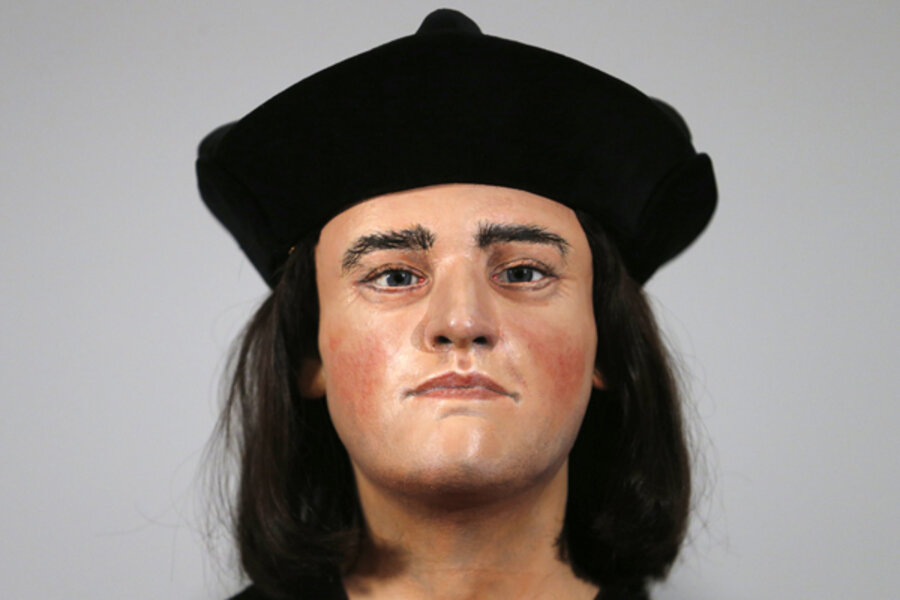Day after discovery announcement, King Richard III's reconstructed 'face' unveiled
Loading...
| London
With a large chin, a prominent slightly arched nose and delicate lips, the "face" of England's King Richard III was unveiled on Tuesday, a day after researchers confirmed his remains had finally been found after 500 years.
A team of university archaeologists and scientists announced on Monday that a skeleton discovered last September underneath a council parking lot in Leicester was indeed that of Richard, the last English king to die in battle, in 1485.
Devotees of Richard, who have long campaigned to restore his reputation, proudly revealed a 3D reconstruction of the long-lost monarch's head on Tuesday, introducing him to reporters as "His Grace Richard Plantagenet, King of England and France, Lord of Ireland."
They said the face appeared sympathetic and noble - not that of a man cast by William Shakespeare as a villainous, deformed monster who murdered his nephews, the "Princes in the Tower".
"I hope you can see in this face what I see in this face and that's a man who is three-dimensional in every sense," said Philippa Langley of the Richard III Society, who led the four-year hunt to find the king's remains.
"It doesn't look like the face of a tyrant. If ... you look into his eyes, it really is like he can start speaking to you," Langley told reporters.
A 3D computer image of the face was first created based on a scan taken of Richard's skeleton after it was found in a shallow grave in the remains of a friary church, now located under Leicester City Council's social services department car park in central England. The image was then made into a plastic model.
"NO SLANTY EYES, MEAN MOUTHS"
The reconstruction is faithful to an anatomical assessment of the skull, and about 70 percent of the face's surface should have less than 0.08 inches of error, according to the professor of craniofacial identification who created it.
No portraits of Richard were used for the main facial reconstruction, although the clothing, wig, and some features such as eyebrows, eye, and skin color were based on paintings of the dead king.
The final outcome does bear a strong resemblance to some portraits of Richard - but without some of the less flattering traits that appeared during the reign of Henry VII, his conqueror at the 1485 Battle of Bosworth Field, and the Tudor dynasty that followed.
Langley said it was a face without the Tudor caricatures: "No slanty eyes, no mean mouths, no clawed fingers beneath it."
Wearing a black felt hat, with hair down to his shoulders, one of which was slightly higher than the other - in keeping with the discovery his skeleton had a dramatic spinal curvature - the reconstruction depicted Richard, 32 at his death, with delicate, almost feminine features.
His body is due to be re-interred at Leicester Cathedral next year while the bust reconstruction will take pride of place at a visitors' center to be opened close to the site where the body lay in a small, irregular grave for more than five centuries.
"It was seeing this face which was actually the most important moment for me, the most extraordinary moment," Langley said, explaining the project had two aims: to find the remains to ensure a dignified burial and to reveal the "real Richard".
"For me when this was revealed and I was looking at his face ... that was the biggest moment. Suddenly the aim of seeing the real Richard III, it came true, a miraculous dream really coming true."







